How To Soundproof A Hollow Door? 9 Esay Ways
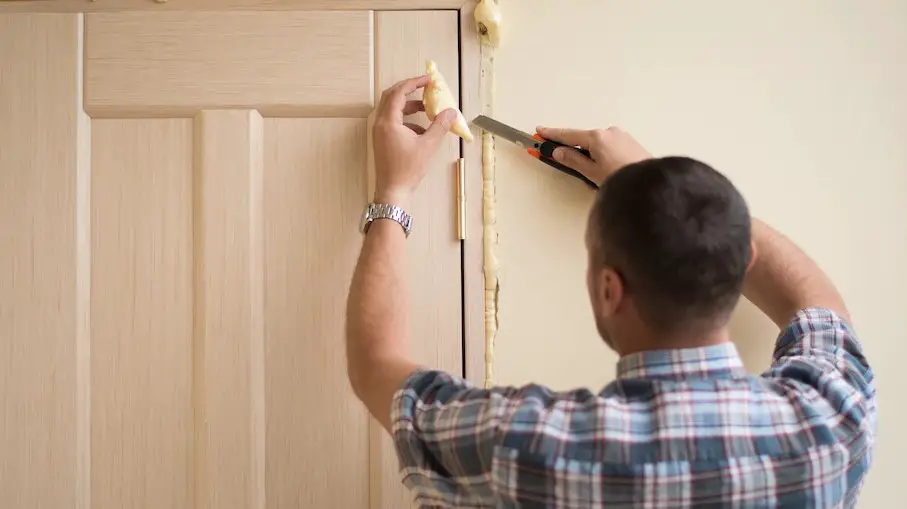
Whether you’re striving for a quiet space to work, study, or simply relax, a noisy interior door can be a nuisance. The biggest noise emitters in the house are usually the windows and doors, so it is not surprising that you should pay the most attention to them if you want a quiet atmosphere.
Unfortunately, these doors lack the necessary bulk to effectively block out noises from other areas within the house. Today, we’ll talk about easy-to-follow steps on soundproofing a hollow door. We’ll guide you through various methods, materials, and DIY tips to help you achieve a more peaceful home environment. So, let’s start!
How To Soundproof A Hollow Door? To soundproof a hollow door, start by hanging a soundproof blanket over it. Next, use noise-reducing materials like weather stripping, door sweeps, and soundproof sealants around the door edges. For better results, add soundproofing materials like mass-loaded vinyl or acoustic foam directly to the door itself.
Each method will give you different results; some are simpler to apply, while some require DIY skills. In this article, we’ll talk more about this and explain what must be done. So, let’s start!
Things To Consider Before Soundproofing Hollow Door
Before we start, it’s important to consider what the room you’re planning to soundproof is used for and just how much soundproofing it requires. Also, remember that some soundproofing methods may not look pleasing to the eye so think about if the room’s aesthetic is important to you.
If you’re a tenant, you should consider whether the soundproofing will leave any lasting changes on the door. Lastly, remember that some soundproofing methods can be quite costly. You’ll need to make sure that the door’s hinges and frame are sturdy enough to handle the extra weight added by the soundproofing materials.
Related Article: How to Soundproof a Garage Door? 7 Easy Ways
5 Ways To Soundproof a Hollow Door
Most people might find DIY tasks complicated. However, this is something you have to do, and your goal is to soundproof a hollow door at any cost. Here are some easy methods for making a hollow door soundproof.
1. Use Carpets
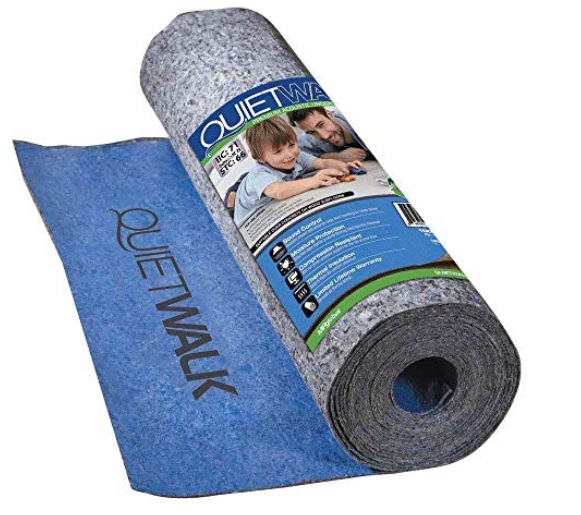
This is perhaps the simplest and fastest method you can use. One aspect to think about is the noise entering from underneath the door. A simple tactic to block some of these sounds is by placing carpets on both sides of your hollow door. This could help absorb some of the noise.
2. Door Sweep
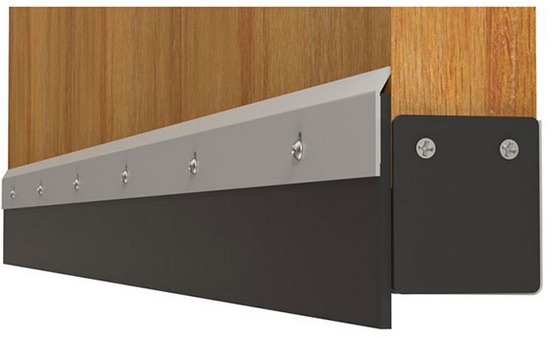
The space below the door is a significant path for sound to sneak in. A door sweep or a draft stopper is an easy method to block sound. You can buy them in various designs. One type is attached to the door and features a soft rubber strip that reaches the floor, effectively blocking drafts and sounds.
Another kind of door bottom seal features 2 large round foam tubes encased in fabric, joined by a cloth strip. This strip is placed just under the hollow door, with a foam tube on each side. These fit snugly and remain in place even as the door swings open and shut. A lot of these come with easily washable covers as they tend to collect dust and dirt over time.
3. Weather Stripping
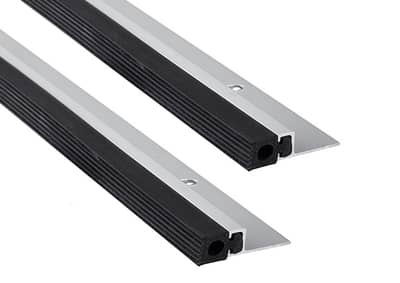
> Buy Weather Stripping HERE <
A method similar to the door sweep involves adding weather stripping. Installation is pretty simple if you follow the instructions provided by the manufacturer. Various sizes of weather strippings are available on the market, and you can choose the perfect size by measuring the gaps that are placed on a door frame. You also have several material options, like foam, rubber, or silicone.
Related Article: How To Reduce Echo In A Room Or Office?
4. Soundproof Sealant & Adhesive
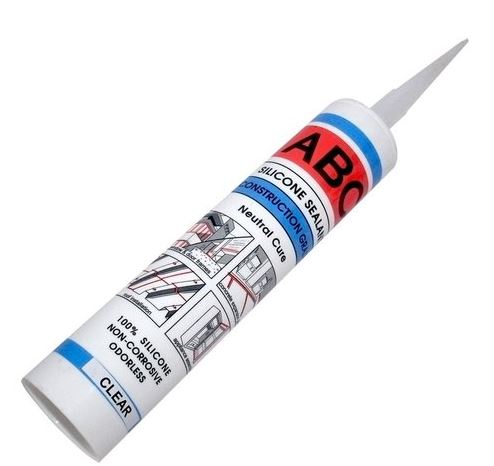
> Buy Acoustical Caulk (Sealant) HERE <
Another great method that can be used to fill up the gaps around the door frame is by using a soundproof sealant. For instance, Green Glue is a special mixture made for noise-blocking purposes. Apply it to seal cracks and adhere sound-damping mats or acoustic foam to the surfaces around your hollow door.
5. Use Soundproof Blanket / Curtains
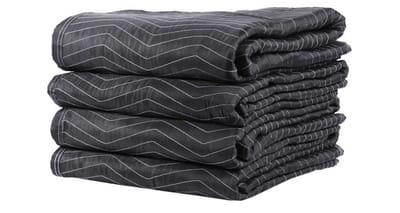
> Buy Soundproof Blankets HERE <
Another easy method that can be used to block noise is a soundproof blanket. A soundproof blanket could be placed on each side of the hollow door for better soundproofing.
A lot of these soundproof blankets come with eyelets, allowing you to place them on hooks above the hollow door, making them easy to draw back when they are not needed. Soundproof blankets are quite heavy, so be sure the hooks are securely fastened into wall studs to support their weight safely.
Soundproofing curtains are another alternative, although they might not be as good a sound absorber as blankets. Nonetheless, they can be easily installed and removed when necessary. Simply mount a curtain rod on your hollow door and ensure they hang just like normal curtains.
These drapes are designed with built-in eyelets for better hanging. If you’re concerned about the room’s aesthetics, you will easily find a lot of curtains in shades that harmonize with your room’s color scheme.
4 DIY Ways On How To Soundproof a Hollow Door
If you are one of those people who likes to do DIY jobs, then you don’t have to worry about how to soundproof your hollow doors even better. Here are some ideas that you can use for your doors.
Note! Remember that some of these methods can significantly increase the door’s weight. As you’re dealing with these type of door, it’s important to remember that the current hinges might not be able to carry the additional weight.
Therefore, when you remove the door and add the soundproof materials, replacing the existing hinges with sturdier and stronger ones that can support the extra weight would be wise.
6. Spray Foam Insulation
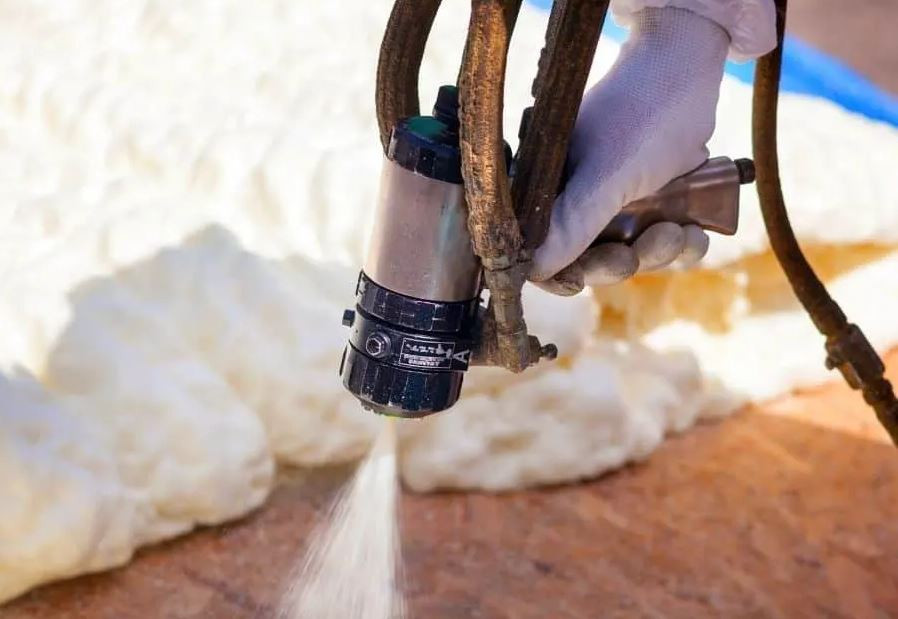
For those who don’t want to add extra weight to the door, consider filling the hollow areas using spray foam. You’ll need a small drill bit, around 5 cans of foam spray, and some adhesive tape for this task.
Remove the door from its hinges and place it in a suitable work area. Drill holes along the sides of your hollow door, spacing them about 12 inches apart. Start from the bottom, spray the foam into your door, covering each hole with tape. So you can prevent the foam from spilling out.
Allow the foam to expand fully and dry. If any foam seeps out from the holes you’ve made, just trim it off using a good sharp knife. The foam can also be painted over, allowing you to paint the drilled holes before rehanging the door.
7. Acoustic Foam
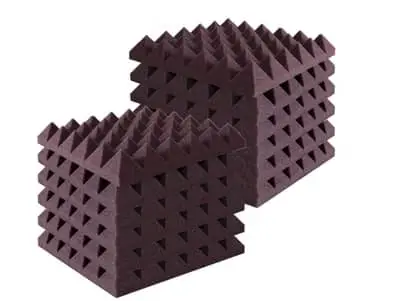
Acoustic foam panels can be an effective solution for noise reduction. Based on your requirements, they can be used directly onto the door or the panel that’s attached to the door. The great thing about these panels is that they can also be hung around a room, such as a studio, to minimize sound echoes.
A significant benefit of acoustic panels is that they’re available in a range of colors. Standard black acoustic panels are both lightweight and cheap and can be hung using adhesive strips. These acoustic tiles are offered in various colors and shapes, so it is easy to find options that complement your décor if aesthetics concern you.
8. Sound Deadening Mats
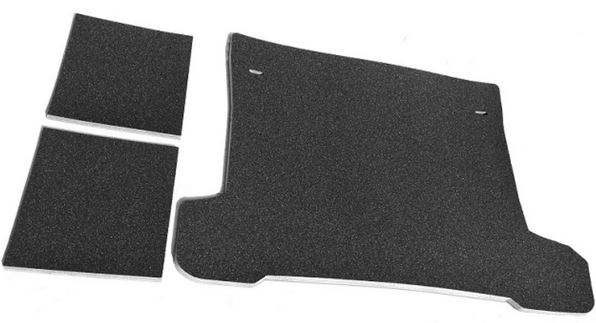
> Buy Sound Deadening Mats HERE <
Typically used in vehicles, these sound-deadening mats help reduce the noise you hear while driving. As such, they’re likely to decrease lower-frequency sounds in a room and can be used to soundproof your hollow doors. You can easily cut them with a utility knife and press them into place with a firm roller.
For those who don’t want this to be placed directly onto door, consider cutting a thin plywood panel to fit your door’s dimensions. You can then stick the sound-absorbing pads onto this panel. Lastly, attach this panel to your door using screws.
If you decide that you don’t need it in the future, it’s simpler to fill a few screw holes than to deal with a door covered in adhesive.
9. Mass Loaded Vinyl
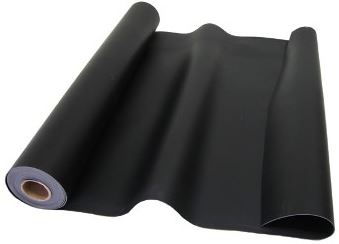
> Buy Mass Loaded Vinyl HERE <
MLV (Mass Loaded Vinyl) is considered one of the best sound-blocking materials on the market. External sound can be drastically reduced with it. Keep in mind that it will add around 10 pounds (4.5 kg) to your door. It’s available in rolls, and it can be installed on your door using staples.
If you apply it on both sides of the door, it will provide superior sound absorption. Another great thing is that MLV can be used inside walls (and also ceilings) to enhance your space’s soundproofing further.
If you want additional tips on how to soundproof your hollow door, here is a great video that you can watch:
Related Article: Are Moving Blankets Soundproof? (Explained)
Final Thoughts
Depending on the level of soundproofing you require and your comfort with DIY tasks, it’s possible to soundproof a hollow door that effectively reduces out most of the noise from other parts of our home. Whether it’s the TV noise from your apartment or someone else is playing a loud music, it is possible to isolate these sounds and focus on your meeting, daily tasks, or work session.
Something as simple as weather stripping or a bottom door seal can work wonders for basic noise reduction. Additionally, soundproof blankets or even curtains offer a more substantial, yet non-permanent noise insulation solution, making them a suitable choice for rented properties.
For better soundproofing, consider the combination of these options. Lastly, if you need a quieter space and are comfortable with DIY tasks, mass-loaded vinyl (MLV) and acoustic tiles could be the perfect additions to your living room.
